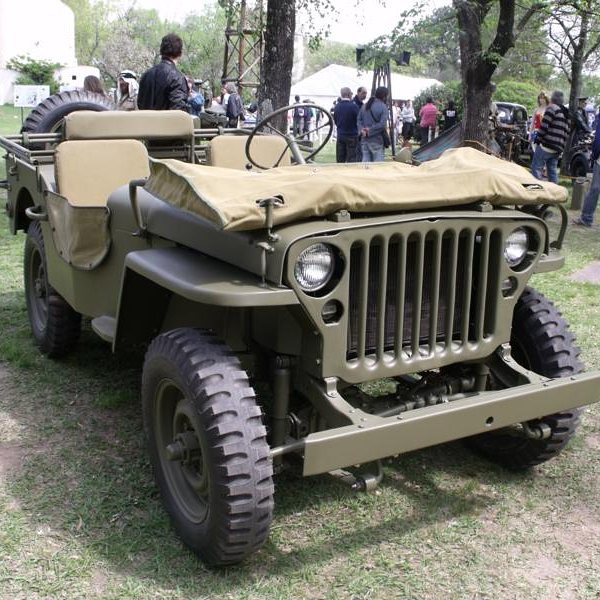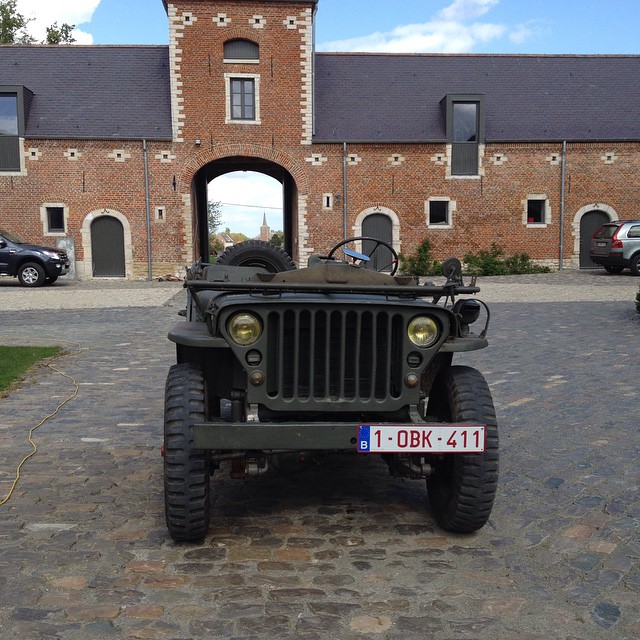We all know the Jeep was an integral part of our kick-ass victory over the Axis forces in World War II. It would later be a hot seller here in the United States becoming an important part of American culture. Its post-war appearance pushed the off-roading experience to new heights, slaying previously remote locations by making them easier to access.
Further underscoring this point, during a promotional stunt in 1941, a photo was snapped of then-Senator James M. Mead of New York who went balls-to-the-wall and impressed the ladies by driving a Jeep up the steps of the United States Capitol. During World War II, it was common to see advertisers taking advantage of the war efforts in publications pushing their products and Jeep dug in deep using this concept.
As true enthusiasts know, Jeeps didn’t exist prior to World War II and began with just two prototypes which were a collective effort by different car companies. As the war continued to rage, hundreds of thousands of these fighting 4x4s were being mass-produced and shipped overseas. In total, 640,000 came off assembly lines, made in 11 different variations and the majority of them were classic Willy’s.
Now that we know the numbers, let’s take a moment to look at some more eye-opening factoids involving the wartime Jeeps.
Stealing From Soldiers’ Stories
Many of the men who served on the front lines in World War II were overwhelmingly impressed by the performance, durability and sheer guts the Jeep vehicles exhibited in battle. The hype continued to spread after the soldiers returned home and shared their war stories with friends, family, and colleagues. As the popularity of Jeeps exploded like a coke bottle packed with mentos, scummy scammers were quick to hop on this rising trend.
Deceptive dirtbags were taking out advertisements in popular post-wartime magazines promising inside information on how to obtain a Jeep used in WWII for a fee of $20 (the equivalent of about $200 in today’s market). The ads claimed the recipient would be able to purchase one of the vehicles that survived the battle boxed up in a crate for only $50. Obviously, the offer was total bull-shite since it was completely cost prohibitive to deliver on this promise along with the fact many of the Jeeps used in battle were scrapped or destroyed.
Random Facts From the Front Line
The Jeeps deployed to the front line were pretty basic battle bots. The 1941 Willy’s MB models had a very simplistic design and did not require keys to start the engine. A push-button pedal on the floorboard was all the driver needed to crank the ignition. Here are some more random, mostly design-related facts about the vehicles that made their mark during WWII:
- The Ford GPW and Willy’s MB designs were so similar the only way to tell the difference was to locate the nameplates installed on the vehicles
- The Willy’s MB had no doors and only a cloth roof
- Windshields on the Willy’s MB were an afterthought and were able to be put down if needed
- Wartime Jeeps had three-speed transmissions along with a gear used for traveling in reverse
- The four-cylinder engine produced 60-horsepower at 4,000 RPM in four-wheel-drive and was capable of reaching speeds of up to 45 miles per hour
- Spare tires were commonly located on the rear of the vehicle and a gas tank could be mounted on the side
- Up to 1,000 pounds of cargo could be hauled
- Jeeps were commonly used to move wounded soldiers which allowed countless lives to be saved
In the original design concept, Jeeps only weighed 1,300 pounds which proved to be far too light for combat. They soon got the stud treatment and were beefed up to 2,160 pounds in order to survive rugged battle conditions. In comparison, today’s Wranglers typically tip the scale at 3,900 to 4,900 pounds.
The Iconic Grill and a Ford Fail
The Jeep logo has evolved only slightly over time along with the simplistic design of the vehicle, it has remained liked James Bond’s tuxedo – classic in appearance. The signature grill was originally stamped during World War II and is similar to what we see on today’s Wranglers. The first grill contained nine slots which the Willy’s-Overland Motor company would later change to seven slots. The Jeep brand has stuck with this look ever since especially in consideration of the fact the Ford Motor Company had copyrighted the nine-slot grill design.

Speaking of the FoMoCo, the car company was commissioned to build an amphibious Jeep called the Ford GPA. However, once built, it floundered in the water like a carp with no fins. Slow and heavy it was a deadweight disaster. After nearly 13,000 of these vehicles were produced, many of them were sent to be used by troops in the Soviet Union. Eventually, the Russians would later create their own design of an amphibious vehicle to replace the Ford flop.
So in conclusion, avoid the headaches of trying to stay on top of everything that’s really Jeep sweet, current and unique. Sign up for our newsletter and get all the good stuff delivered to your inbox.











[…] and sell a vehicle that looks eerily close to a younger sibling of one of our most beloved, historic and classic 4x4s? WTF, […]